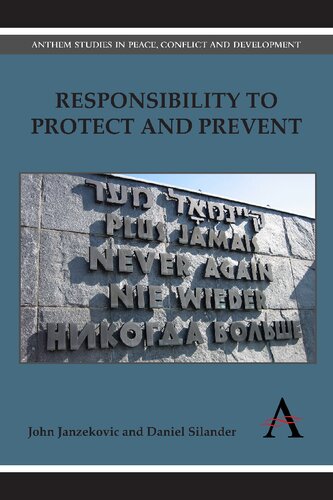

Most ebook files are in PDF format, so you can easily read them using various software such as Foxit Reader or directly on the Google Chrome browser.
Some ebook files are released by publishers in other formats such as .awz, .mobi, .epub, .fb2, etc. You may need to install specific software to read these formats on mobile/PC, such as Calibre.
Please read the tutorial at this link: https://ebookbell.com/faq
We offer FREE conversion to the popular formats you request; however, this may take some time. Therefore, right after payment, please email us, and we will try to provide the service as quickly as possible.
For some exceptional file formats or broken links (if any), please refrain from opening any disputes. Instead, email us first, and we will try to assist within a maximum of 6 hours.
EbookBell Team

5.0
108 reviews‘Responsibility to Protect and Prevent: Principles, Promises and Practicalities’ explores the evolution of responsibility to protect (R2P), a principle which – according to its supporters – has evolved into a new type of responsive norm for how the international community should react to serious and deliberate human rights violations. Arguing that the R2P ethos has been misunderstood and used ineffectively, this work defends the validity of R2P and urges for a more practical understanding that moves beyond theory.
The progression of R2P from an initial concept to formal ratification has been a very difficult one, with a great deal of disagreement over its validity as a substantive norm in international affairs. The key disagreement is not that protection or prevention are unimportant, but rather how the fine-sounding R2P principles are supposed to work in practice. This volume presents a number of important arguments that are directly related to the state vs. human security debate, with a critical analysis of the nexus between the protection verses prevention theses. Through the case study of the Libyan Crisis, Janzekovic and Silander offer an example of the R2P thesis in action, and support the claim that prevention should be more than an adjunct to protection.